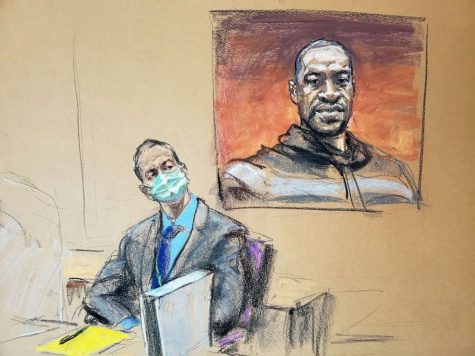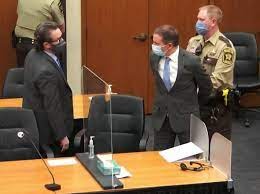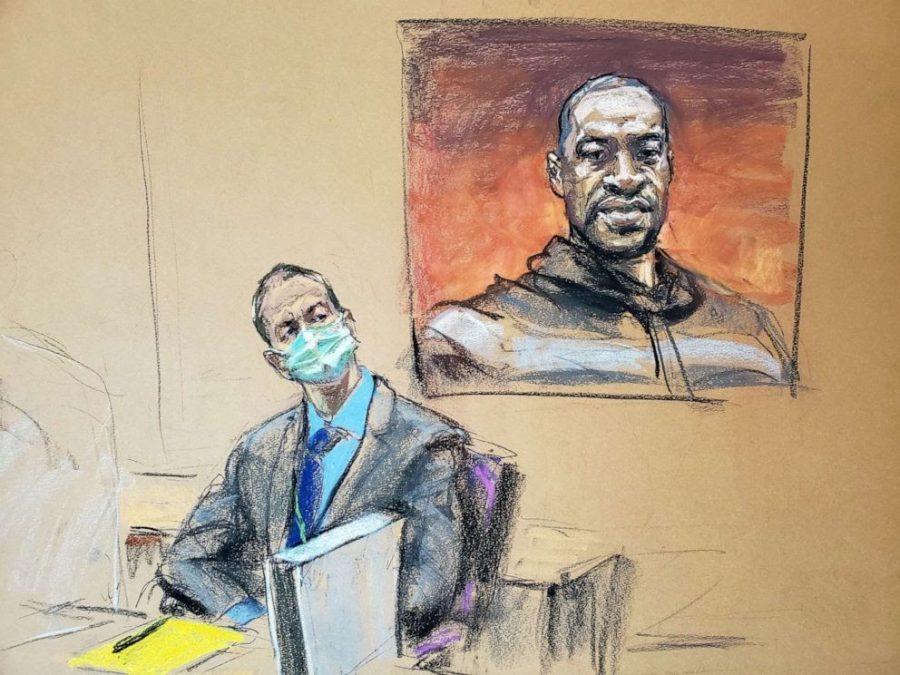Derek Chauvin Trial
Courtesy of Reuter’s Jane Rosenberg
A courtroom sketch depicting Derek Chauvin in front of George Floyd’s photo displayed during the trial on 29 March 2021.
May 17, 2021
In 2020 May, George Floyd, a 46-year-old Black man, was murdered in Minneapolis, Minnesota by 45-year old White police officer Derek Chauvin. Even after Floyd had pleaded, “I can’t breathe,” Chauvin refused to remove his knee from Floyd’s neck for 9 minutes and 29 seconds, ultimately ending his life. This horrifying event woke the sleeping tiger and a great percentage of the American public stood in solidarity with the Black community, simultaneously condemning police brutality and America’s systemic racism.

Broadcasted live, the Derek Chauvin Trial began on 29 March 2021. Presided by Judge Peter Cahill—a judge known for his fairness—the trial had many moving parts, including the jury, testimonies, and witnesses. The jury, consisting of twelve jurors, was quite diverse, in gender, occupation, age, and race (considering Hennepin County’s racial demography). It has been revealed that the jury had already been certain of their ultimate verdict to convict Chauvin, eleven voting for “G” (guilty) and one voting for “U” (unsure) during their seven-hour, closed-door deliberation. Additionally, medical examiner Dr. Andrew Baker confirmed that the cause of Floyd’s death was a cardiopulmonary arrest from the long-held neck compression, coming to the conclusion that his death was a homicide. In agreement, the members of the Minneapolis police department, who served as testimonies for the prosecution, all claimed that Chauvin’s restraint was unnecessarily held for too long. With the testimonies of medical examiners and other police officers, the prosecution concluded that Floyd’s death was a direct result of the overwhelming weight on his neck, ultimately leading to his heart-stopping from the brain injury and arrhythmia caused by low oxygen levels.
On 20 April 2021—after waiting for a month—the final decision of the Derek Chauvin trial had been made. Chauvin, the police officer responsible for Floyd’s death, was charged with unintentional second-degree murder (murdering another human without the intention of doing so while committing or trying to commit a felony offense), third-degree murder (murdering another human being by “perpetrating an act imminently dangerous to others and evidencing a depraved mind without regard for human life”), and second-degree manslaughter (murdering another human being by “culpable negligence, creating an unreasonable risk, [taking] the risk of causing death or great bodily harm to another individual”). The maximum sentence for each charge, respectively, is 40 years, 25 years, and 10 years. However, as of 4 May 2021, the question of how long his sentence will last is left unanswered.

Many rejoiced the final verdict made on the 20th, including Floyd’s brother Philonise Floyd and friend Maurice Lester Hall. When reporters had asked brother Philonise Floyd what he was praying for in the courtroom, he had explained that he prayed that “they would find [Chauvin] guilty, [especially because], as an African American, [Black individuals] usually never get justice” (The Hill). This, like friend Hall had told CNN’s Chris Cuomo in an interview, marks the “beginning for the future of Black America.” As the Black Lives Matter movement continues to push forward and seek equality and justice for Black Americans, the Chauvin trial has brought hope and assurance of progress to the people of America.













